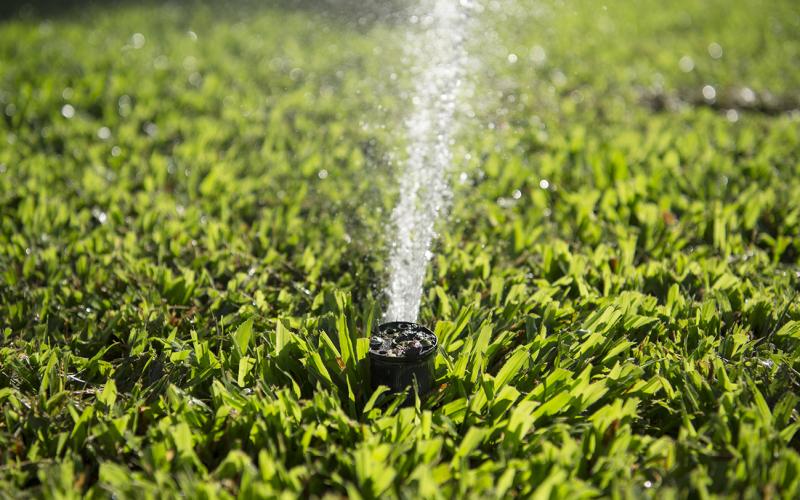Common irrigation issues and how to fix them
Sprinklers
If your sprinkler is spraying at odd angles or the ground around it is soggy, chances are something’s broken.
Check the basics:
- Is dirt or debris clogging the sprinkler head?
- Are you using the correct water pressure? PGP and MP rotators need different pressures to operate properly.
Helpful sprinkler tips:
- Use a tap timer to keep run times short and prevent wasting water.
- Avoid watering during the heat of the day or when it’s windy.
- Make sure sprinkler arcs cover all areas of your garden - no dry spots and no wasted water on walls, paths or roads.
- Match sprinkler heads so water is distributed evenly across your lawn.
Pipes
Old or damaged pipes are another common cause of irrigation issues.
What to look for:
- Blockages can occur when ants or sediment build up. Flush your irrigation once every couple of weeks to keep pipes clear.
- Use quality materials - poly and PVC pipes can last over 30 years.
- Check pipe size. Most homes need 25 mm diameter pipes, while rural properties may need larger ones.
- Invest in durability. Pipes with thicker walls, higher density, and UV protection last longer - a smart choice in the Northern Territory.
Drippers
Drippers are by far the most efficient way to water your garden but only when they’re working properly.
Keep an eye out for:
- Drippers that have popped off or exploded - a sign of high pressure.
- Perished rubber parts.
- Blockages - flush your system every couple of weeks to prevent buildup.
Dripper tips:
- Use flow-regulating drippers for consistent water delivery. Unregulated drippers can waste up to 40 litres per hour.
- Choose the right dripper for your water pressure to avoid uneven watering.
Solenoids
If water is trickling from a sprinkler when that station is off, the solenoid valve may be blocked.
Quick checks:
- Check for debris or sediment inside the valve. This is the most common cause.
- If there’s a pool of water around the valve, it could be cracked or broken. But check nearby pipes too - a leak there can look similar.
Irrigation timers and controllers
Every water-wise garden will benefit from a timer, whether it’s a simple manual model or a fully automated system.
To keep things running smoothly:
- Make sure the timer is set correctly to avoid overwatering and wasting water. Most manuals are available online.
- An automatic system often pays for itself over time through better efficiency and ease of use.
Other things to check:
- Irrigation not turning on? You might have a flat battery.
- After storms, inspect for lightning damage. It can burn out underground wiring.
- Experiencing low pressure? Avoid watering during peak times - 5pm to midnight.
- Upgrade to a smart controller that adjusts watering based on the weather. Perfect for holidays or busy weeks when you can’t keep an eye on the garden.
3-Step Leak Check
- It’s a good idea to do the 3-step leak every few months. Perhaps set yourself a reminder, such as when your bill arrives.

